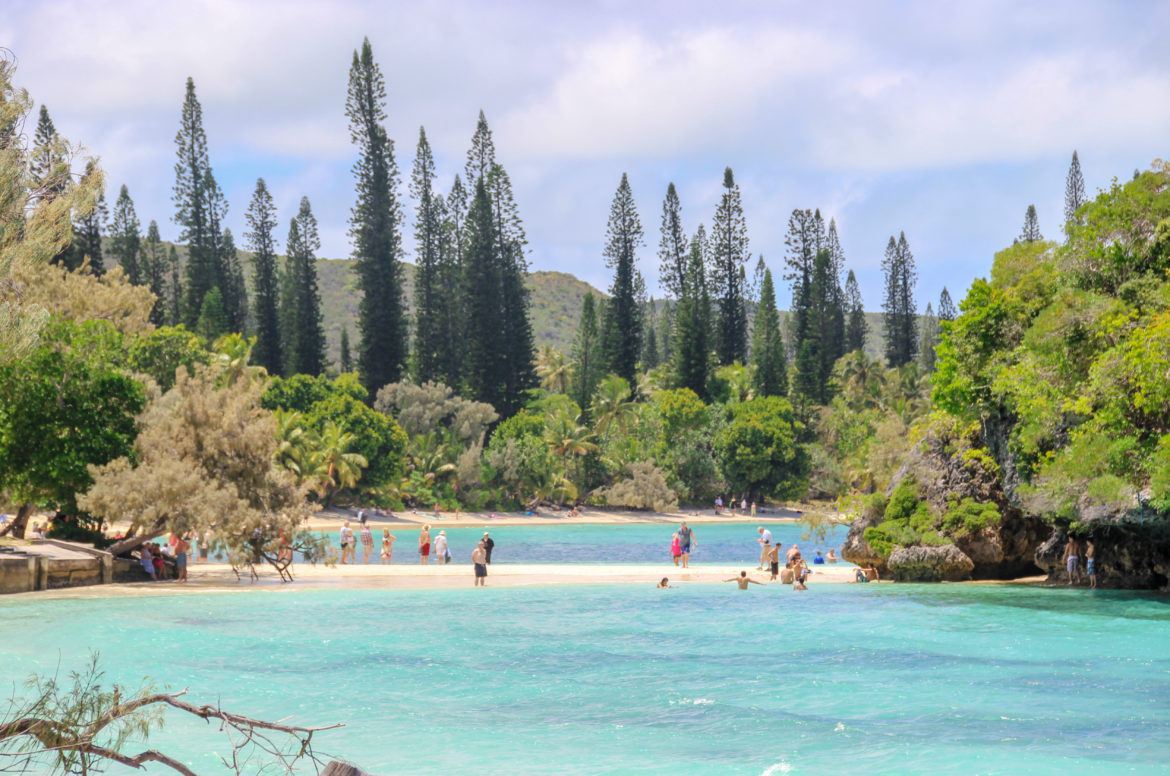This island is part of the archipelago of New Caledonia, an overseas collectivity of France. ‘the closest island to paradise,’ the extraordinary New Caledonia Barrier Reef surrounds it. Captain Cook named the island after its unique, tall native pines, Araucaria columnaris. In contrast to the stereotypical palm tree for a tropical setting, the Isle de Pines still grows these ancient fossils from the Triassic Period. They dominate the islands landscapes and skyline with tall, columnar pines, reaching heights up to 60 metres (196 ft). After the mass extinction, 19 species of Araucaria remain worldwide. Even more, 13 of these remain endemic to New Caledonia. This pine peels unique thin, paper-like bark away from the trunk.
The island is especially known for its pristine, white sandy beaches for swimming and snorkeling. The center of the island is home to a plateau at 262 metres (860 ft) for awesome panoramic views. With interesting flora and fauna, the Isle de Pines is also home to the world’s largest gecko, Rhacodactylus leachianus. The Melanesian Kanaks are the main inhabitants of the island.
Isle de Pines Bays and Beaches
The sandy white beaches are extraordinary and luxurious for rejuvenation.
Kanumera Bay: The iconic bay shows its massive sacred rock in the center. In the bay, east of Kanumera Rock is one of the most accessible and beautiful areas among the branch coral and its marine denizens. For example, snorkelers see groupers, angelfish, damselfish and clownfish.
Kuto Bay: This bay is open to the ocean and reveals the most pure and white sands on the island. Additionally, many of the restaurants line along here for view and fresh seafood.







